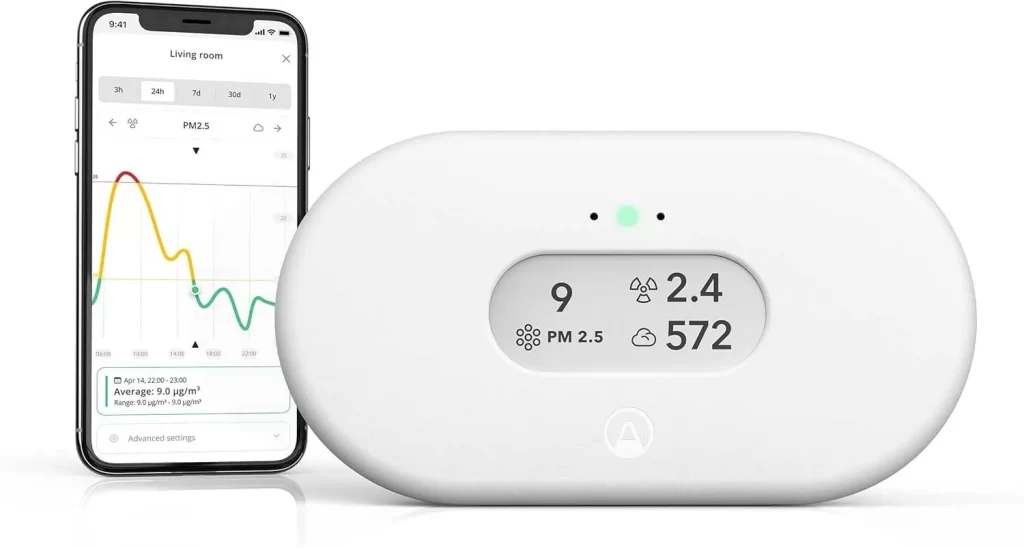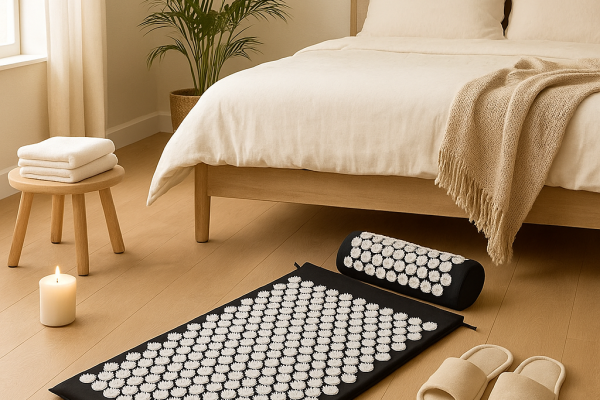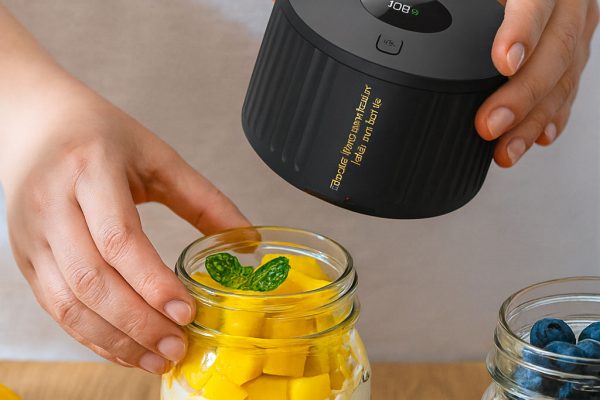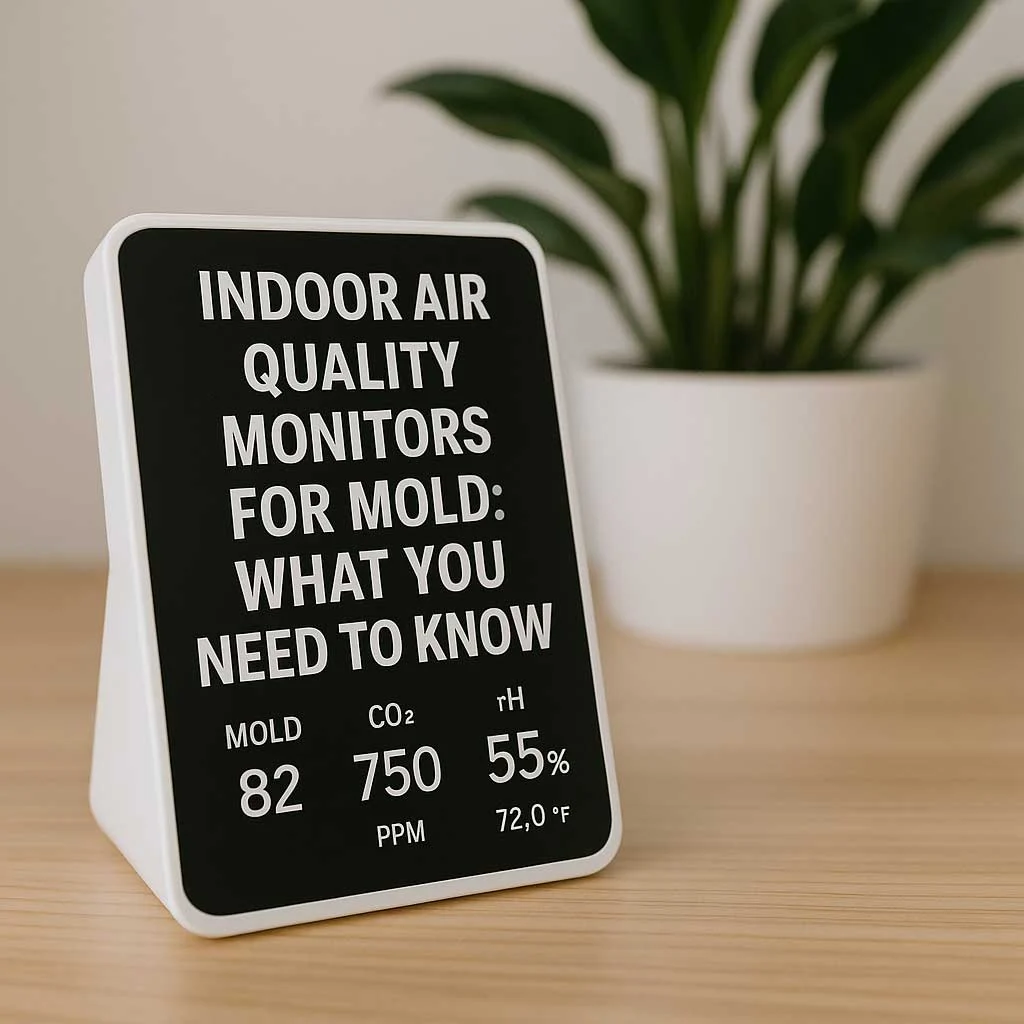
Mold growth in homes isn’t just unsightly – it can lead to serious health issues ranging from allergic reactions to respiratory problems. With Americans spending roughly 90% of their time indoors, monitoring the air quality in your home has become increasingly important. But can modern air quality monitors effectively detect mold? This article examines how these devices work, their capabilities and limitations, and how to select the right one for protecting your home.
Understanding Mold and Indoor Air Quality
Mold is a type of fungus that thrives in moist environments and can grow on various indoor surfaces. When active, mold colonies release microscopic spores (1-40 micrometers in size) into the air. These airborne spores not only spread the mold to new locations but can also trigger health reactions when inhaled.
The key conditions that promote mold growth include:
- Relative humidity above 60% (optimal growth at 70-93%)
- Warm temperatures
- Poor ventilation
- Available food sources (building materials, dust, etc.)
Early detection of these conditions – or the mold itself – is crucial for preventing both health issues and property damage.
How Air Quality Monitors Detect Mold

Most consumer-grade air quality monitors don’t directly identify mold species. Instead, they use various sensors to detect conditions or particles that indicate potential mold problems:
1. Humidity and Temperature Sensors
How they work: These fundamental sensors measure environmental conditions that predict mold risk.
Effectiveness: High-quality monitors like the Airthings Wave Mini use algorithms based on temperature-humidity relationships to calculate a “Mold Risk Indicator.” When conditions favor mold growth (typically relative humidity >60%), the monitor alerts users before visible mold appears.
Accuracy: Most quality monitors offer humidity sensors with ±3% accuracy, sufficient for predicting mold-friendly environments.
2. Particulate Matter (PM) Sensors
How they work: Using laser scattering technology, PM sensors detect airborne particles of different sizes, including PM2.5 (particles ≤2.5 micrometers) and PM10 (particles ≤10 micrometers).
Effectiveness for mold: Since mold spores typically range from 1-40 micrometers, they fall within the detection capabilities of these sensors. However, PM sensors cannot distinguish mold spores from other particles like dust, pollen, or pet dander.
Practical application: A sudden increase in PM readings, especially when coupled with high humidity, might indicate mold spore release – but confirmation requires visual inspection or professional testing.
3. VOC Sensors
How they work: Volatile Organic Compound sensors detect gaseous compounds in the air, typically using metal oxide semiconductor technology.
Mold connection: Growing mold releases Microbial VOCs (MVOCs) – byproducts of their metabolism that create the characteristic musty odor.
Limitations: VOC sensors respond to numerous household chemicals beyond mold-related MVOCs, making them helpful but not specific indicators of mold presence.
4. Emerging Direct Detection Technologies
Some newer, specialized devices claim to directly detect mold spores:
- Spectral analysis: Companies like Sensio Air use patented technology to analyze how particles interact with light, comparing patterns against pathogen databases.
- Fluorescence technology: Professional-grade instruments like the Instascope use fluorescence to quantify airborne mold spores in real-time.
These technologies show promise but are generally found in higher-end or professional equipment rather than mainstream consumer monitors.
Comparative Analysis: Top Air Quality Monitors for Mold Detection
Here’s how some popular monitors compare in their mold detection capabilities:

Key Features to Consider
Best Budget Option:
Airthings Wave Mini offers excellent mold risk indication through humidity monitoring at an affordable price point.
Best Overall:
Airthings View Plus provides comprehensive sensing capabilities with PM2.5, VOC, and humidity monitoring in one device.
Best Smart Home Integration:
Amazon Smart Air Quality Monitor seamlessly connects with Alexa and can trigger smart home automations based on readings.
Most Advanced Technology:
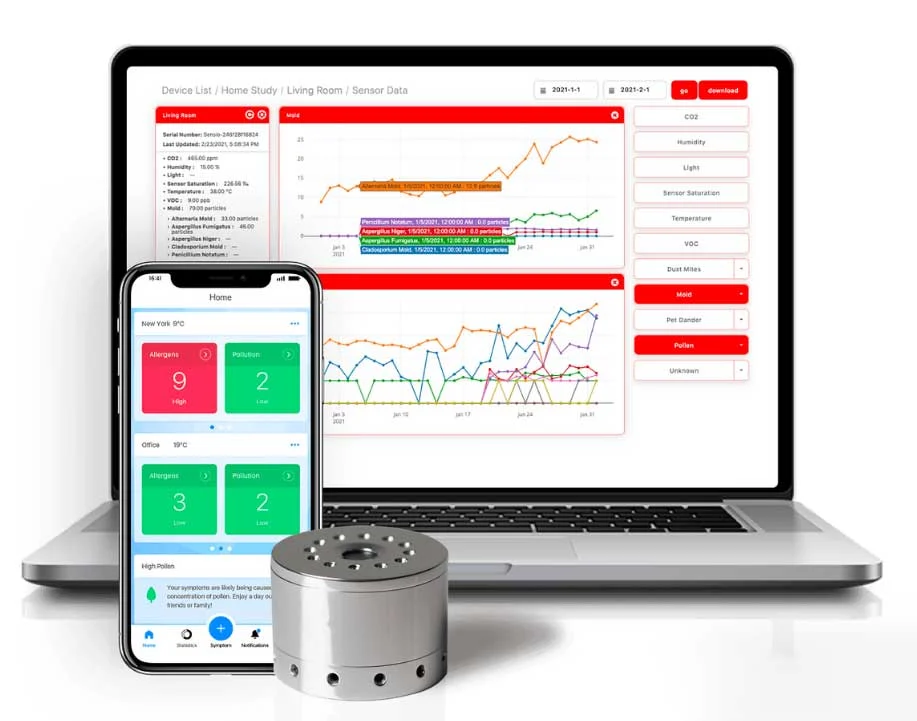
Sensio Air claims the most direct mold detection capabilities, though at a premium price point.
Limitations of Consumer-Grade Mold Detection
When shopping for an air quality monitor to help with mold concerns, it’s important to understand these key limitations:
- Lack of specificity: Most monitors cannot differentiate between mold spores and other particles of similar size.
- No species identification: Even monitors that detect particles in the mold spore size range cannot identify the type of mold (like black mold vs. common mildew).
- Indirect indicators: Many “mold detection” features are actually predictive algorithms based on environmental conditions rather than actual mold detection.
- Calibration challenges: VOC sensors vary in sensitivity and calibration, affecting their reliability for MVOC detection.
- Mixed real-world performance: User reviews for monitors with mold detection features show varying satisfaction levels regarding accuracy.
For definitive mold identification, professional air sampling and laboratory analysis remain the gold standard.
Interpreting Readings and Taking Action
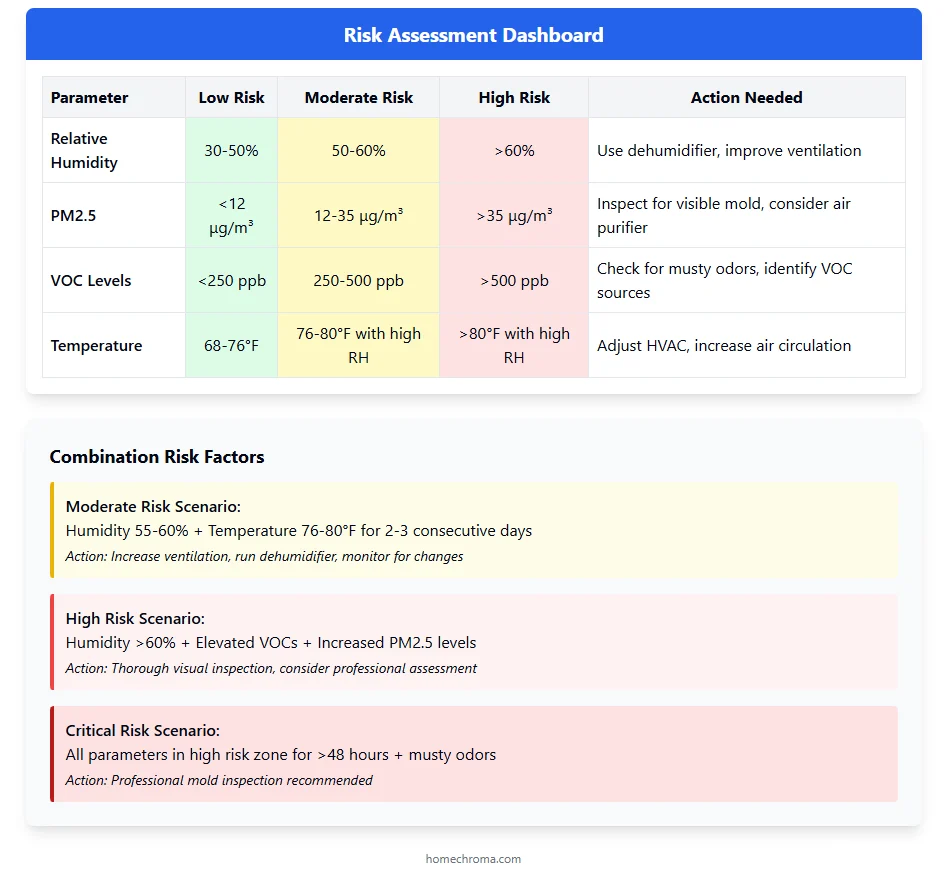
When your air quality monitor indicates potential mold issues, here’s how to respond:
For Mold Risk Indicators (based on humidity/temperature):
- Readings in “poor” or “high risk” ranges suggest conditions favorable for mold growth
- Take preventive action by improving ventilation, using dehumidifiers, or addressing moisture sources
- Aim to maintain indoor humidity between 30-50%
For Elevated Particulate Matter:
- Sudden increases in PM2.5 or PM10 readings could indicate mold spores or other particles
- Conduct visual inspections of areas prone to moisture (bathrooms, basements, around windows)
- Look for visible signs of mold growth on surfaces
For VOC Spikes:
- Check for non-mold VOC sources first (new furniture, cleaning products, etc.)
- If accompanied by musty odors and elevated humidity, investigate for hidden mold
- Persistent elevated VOCs with no obvious source may warrant professional inspection
Best Practices for Monitor Placement and Use
To maximize the effectiveness of your air quality monitor for mold detection:
- Strategic placement:
- Position monitors in areas prone to moisture like bathrooms, kitchens, and basements
- Keep devices away from direct airflow (vents, fans, windows) for more accurate readings
- For larger homes, consider multiple monitors to cover different zones
- Data tracking:
- Monitor trends over time rather than focusing on single readings
- Look for correlations between weather changes, home activities, and air quality metrics
- Use app capabilities to set alerts for concerning conditions
- Complementary practices:
- Regularly inspect visible surfaces, especially in humid areas
- Address water leaks and moisture issues promptly
- Consider professional inspection if monitoring consistently indicates problems
Conclusion: Choosing the Right Monitor for Your Needs
While no consumer-grade air quality monitor can definitively identify mold on its own, these devices provide valuable early warning of conditions conducive to mold growth and possible indicators of existing problems.
For most homeowners, a monitor with these features offers the best balance of functionality and value:
- Accurate humidity and temperature sensors
- Particulate matter detection
- VOC sensing capability
- User-friendly app with data tracking and alerts
The Airthings Wave Mini and View Plus, Amazon Smart Air Quality Monitor, and similar multi-sensor devices offer these capabilities at various price points.
Remember that air quality monitors work best as part of a comprehensive approach to mold prevention, which includes regular visual inspections, prompt moisture control, and professional testing when needed. By understanding both the capabilities and limitations of these devices, you can make informed decisions to protect your home and health from the risks of indoor mold.
Frequently Asked Questions About Air Quality Monitors for Mold
Q: Can air quality monitors actually detect mold? A: Most consumer air quality monitors don’t directly detect mold spores. Instead, they monitor conditions conducive to mold growth (like humidity and temperature) or detect particles and compounds that might indicate mold presence (like particulate matter and VOCs). Only specialized, higher-end monitors claim direct mold spore detection capabilities.
Q: How much should I expect to spend on a good air quality monitor for mold detection? A: Entry-level monitors with basic humidity and temperature sensors start around $30-40. Mid-range monitors with particulate matter and VOC sensors typically cost $70-150. Premium monitors with advanced features and multiple sensors can cost $250 or more. For most homeowners, a mid-range monitor offers sufficient capabilities.
Q: Are expensive monitors significantly better at detecting mold than budget options? A: More expensive monitors typically offer additional sensors, better accuracy, and more comprehensive data analysis. However, even budget monitors that accurately track humidity can help prevent mold by alerting you to risky conditions. The key difference is that higher-end models provide more complete information through multiple detection methods.
Q: What humidity level indicates a risk for mold growth? A: Mold typically thrives when relative humidity exceeds 60%, with optimal growth occurring between 70-93%. Most experts recommend maintaining indoor humidity between 30-50% to prevent mold growth.
Q: How do I know if elevated particulate matter readings are from mold spores? A: You can’t definitively determine this from PM readings alone, as PM sensors detect all particles of a certain size range. However, if PM levels rise alongside increasing humidity and musty odors, mold might be a contributing factor. Visual inspection or professional testing would be needed for confirmation.
Q: How often should I check my monitor readings? A: Review your readings at least weekly during normal conditions. During humid seasons or after water incidents (flooding, leaks), check daily. Many monitors have apps that send alerts when conditions reach concerning levels, allowing you to respond quickly.
Q: Can I rely solely on my air quality monitor to detect mold problems? A: No. While monitors provide valuable information, they should be part of a comprehensive approach that includes regular visual inspections, prompt attention to moisture issues, and professional testing when needed. No consumer monitor can replace professional mold inspection for confirming mold problems.
Q: What features should I prioritize when buying a monitor specifically for mold concerns? A: Look for these key features:
- Accurate humidity and temperature sensors (±3% accuracy or better)
- Particulate matter detection (PM2.5, ideally also PM10)
- VOC sensor capability
- Data logging and trend analysis
- Alert notifications via smartphone app
- Mold risk indicator algorithm (available in some models)
Q: Are portable or wall-mounted monitors better for mold detection? A: Both have advantages. Portable monitors allow you to check different areas of your home and focus on problem spots as needed. Wall-mounted or stationary monitors provide consistent trend data for a specific location. For comprehensive coverage, a stationary monitor in high-risk areas (like basements) combined with a portable unit for spot-checking is ideal.
Q: Do I need multiple monitors in my home? A: For average-sized homes, multiple monitors provide better coverage. Consider at minimum one monitor per floor, with priority given to areas with moisture concerns. Larger homes or homes with history of moisture problems may benefit from additional units in specific problem areas.
Dora Decora is a biophilic interior design specialist and passionate blogger. With a deep commitment to integrating nature into living spaces, Dora specializes in creating environments that foster human-nature connections through thoughtful design elements. Her approach emphasizes sustainable materials, natural lighting, and organic patterns that enhance wellbeing and reduce environmental impact.
This post (https://homechroma.com/indoor-air-quality-monitors-for-mold/) was originally published by Dora Decora on Home Chroma. As an Amazon Associates partner, qualifying purchases are compensated.

